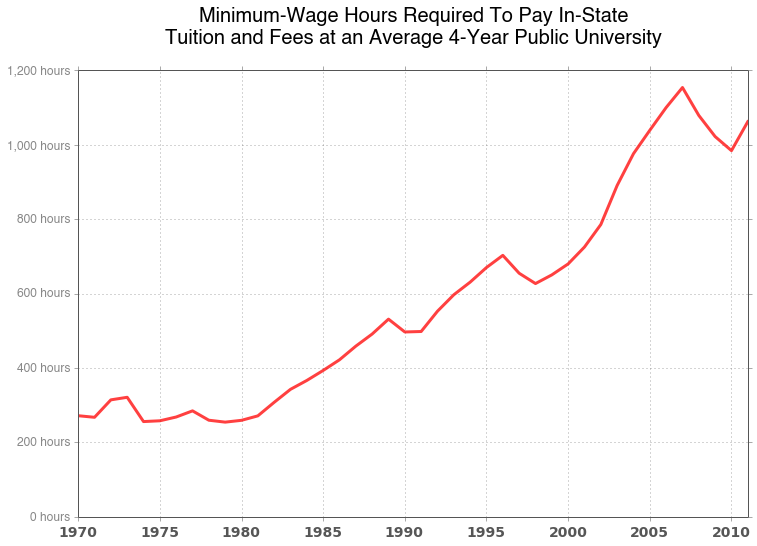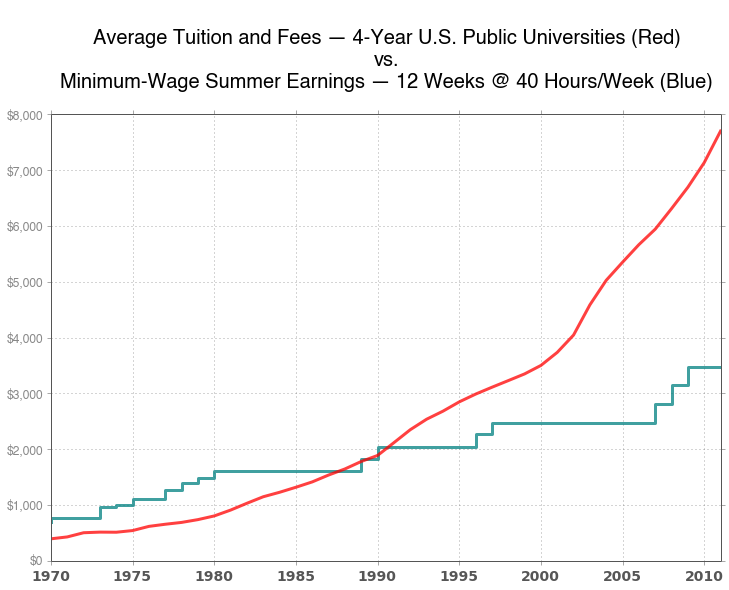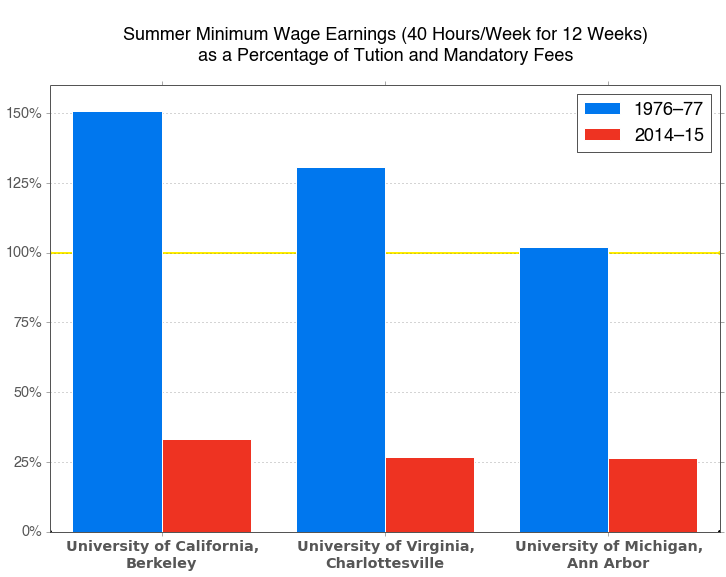
In the summer of 1976, just before my freshman year at the University of California at Berkeley, I worked as a groundskeeper at a neighborhood swim club. The regular minimum wage was $2.20 per hour, but the club was so cheap that I got paid the federal minimum wage for farmworkers. (I did a lot of weeding and watering.) So, I earned just $2 an hour.
But that was more than enough to pay my entire UCB tuition and fees. With one summer of full-time work, I or any real farmworker could make $960, about 50% more than the $637.50 for a whole academic year's tuition and fees at one of the best universities in the world.
Today, I teach at UCB, and I watch many of my students struggle with crushing debt. And no wonder. California just raised its minimum wage to $9, but at that pay, 12 weeks of summer work covers only a third of today's $12,972 tuition and fees.
Even if the movement for a $15 minimum wage for fast-food workers succeeds, a summer's work would cover slightly more than half of the tuition and fees for the 2014–2015 academic year.
One of the main reasons that state universities exist is to open up college education — and the opportunities that come with it — to economically disadvantaged students. So, how much college a summer minimum-wage job buys seems a reasonable measure of how accessible college education is. In different ways, the following charts show exactly that, from the 1970s to the present.
1. Working Longer and Longer to Pay Tuition
How long would you have to work at minimum wage to pay the average in-state tuition and required fees at a U.S. public university? In the early 1970s it was less than 300 hours, or about seven and a half weeks of full-time work. Now? More than 1,000 hours, or 25 weeks.

2. Tuition and Required Fees Have Risen Much Faster Than the Minimum Wage
This chart compares the rise in public university tuition and required fees with the rise in one full summer's worth of minimum wage earnings. The tipping point came around 1990.

3. How Much College Would a Summer’s Minimum Wage Pay For?
What percentage of tuition and required fees could you pay after working a summer job at minimum wage? Here's the answer for three prominent state universities, then and now (academic years 1976–77 and 2014–15).

Note: The raw data and code for these charts can be found here.
